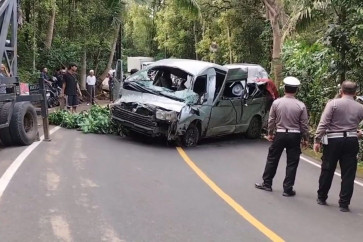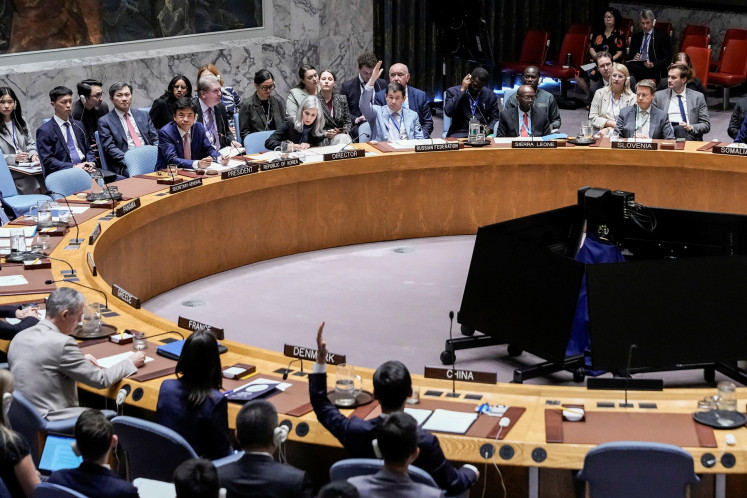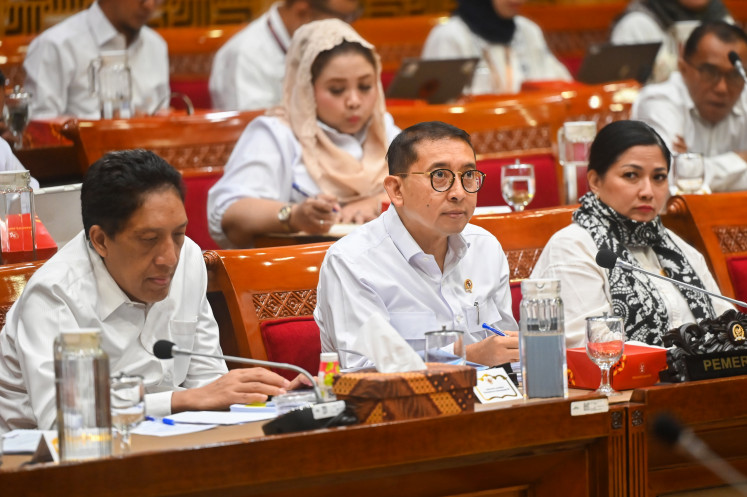Popular Reads
Top Results
Can't find what you're looking for?
View all search resultsPopular Reads
Top Results
Can't find what you're looking for?
View all search resultsFrom farmers to scholars, REDD+ actors set for action
Indonesia is striving to be a leading player on the climate stage but its highly touted REDD+ initiative is still in its formative stages
Change text size
Gift Premium Articles
to Anyone
I
ndonesia is striving to be a leading player on the climate stage but its highly touted REDD+ initiative is still in its formative stages. The central government has already issued the National Strategy on Reducing Emissions from Deforestation and Forest Degradation to curb global warming.
The plan goes beyond reducing carbon emissions from land-use change particularly through tree cutting and peat clearing. The strategy also acts on sustainable forest and peatland governance to preserve carbon stocks and biodiversity, planting new trees to enhance carbon stocks and eradicating poverty-plagued forest communities. These additional goals transformed REDD into REDD+.
The national strategy was released in June by the REDD+ task force that reports directly to the President. Full REDD+ implementation is set to start in 2014 after three core bodies are in place: a REDD+ agency, a REDD+ funding instrument and a REDD+ measurement, reporting and verification (MRV) institution.
The short-term goal (2012-2014) is the strategic improvement of institutions, governance systems and spatial plans.
The medium-term goal (2012-2020) is execution of these governance systems to reach a reduction-emissions target of 26 percent against a business-as-usual scenario by 2020 and a 41 percent target with international funding.
The long-term goal is to make Indonesia’s forests and land areas a net carbon sink by 2030. This means more carbon gases are absorbed and stored than emitted.
Local governments will play a pivotal role as they have to design a province-based REDD+ strategy addressing their needs by September 2012. What is crucial in the whole scheme is getting all the actors on the same wavelength and sense of altruistic urgency.
The 44-page national-strategy document identifies the following as REDD+ stakeholders: regional governments, the private sector, NGOs, indigenous/local peoples and international bodies.
Dr. Herry Purnomo from the Bogor-based Center for International Forestry Research (CIFOR) has identified eight categories of REDD+ actors.
In a June 2012 workshop for journalists on covering climate change in Banjarmasin, the CIFOR scientist presented a matrix of the different knowledge-level, power-level and position on REDD+ of the actors.
The eight actors are: local governments, the forest and land use planning services, political groups, business groups, local farmers, universities and research institutes, NGOs, and international agencies/donors.
The universities and international agencies have the highest level of knowledge on REDD+. The business groups and farmers have the lowest. The rest have intermediate knowledge.
With regard to leadership and power, the farmers have a low level. Meanwhile the provincial environment agencies and NGOs have a high level of leadership but have little power.
Whereas general public entities, business entities, political entities, provincial forestry, transmigration and plantation units have a low level of leadership but a lot of power, the international aid agencies and donors have both high leadership and a lot of power.
The position of the business sector is mostly opposition to the REDD+ scheme. The forestry service, the land use service, universities, NGOs and international agencies support the scheme. Meanwhile local governments, some in the forestry service and land use service, some in the business community as well as farmers and NGOs take a neutral stance.
With regard to the present situation, Herry says the knowledge and support of the actors is intermediate with the state of REDD+ implementation difficult. The goal is for the actors to have a high knowledge and support level and to reach a high success level with ease in REDD+ implementation.
To reach that goal, Herry, who teaches post-graduate forestry at the Bogor Agricultural University (IPB), lists five things that need to be done. One, localize the REDD+ issue.
This means some local areas can be favored to succeed rather than to expect the REDD+ scheme on the whole to succeed nationally.
The idea is to make low carbon development possible in line with local needs.
Two, make the REDD+ benefits real and immediate. Three, meet the real and immediate REDD+ costs. Four, simplify and avoid major changes. Changing REDD to REDD+ can be difficult to implement. Five, establish a superbody like the REDD+ task force or UKP4 to deal with complexities.
The UKP4 is the President’s delivery unit in development oversight. Inherent is the call for bold and effective local leadership. Effective leadership yields successful policies and action.
Spreading the word on successful action can have an infectious, viral effect.
The bottom line is that getting the performance to succeed requires all the actors to read from the same script and deliver their lines on message and on cue.
The writer teaches journalism at Dr. Soetomo Press Institute, Jakarta.










